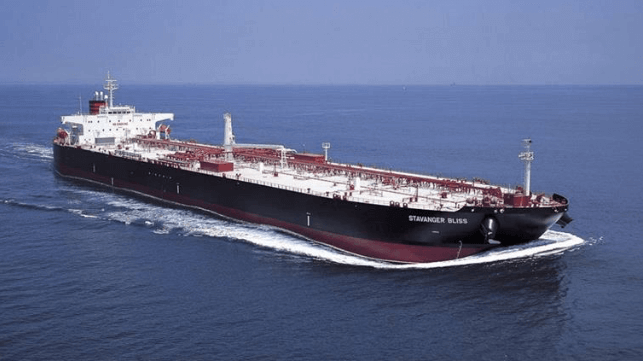Report: COVID Disruption May Have Contributed to Master's Death

After taking on unfamiliar duties due to pandemic-era shortstaffing, the captain of oil tanker Stavanger Bliss died while inspecting a cargo tank that contained inert gas, according to the Norwegian Safety Investigation Authority (NSIA). The agency concluded that it is possible that COVID-related challenges facing the captain and crew "created an extraordinary situation that affected the decisions that were made and thus contributed to the accident arising."
The agency has determined that the tragic accident on board the oil tanker that occurred off Yeosu in South Korea on November 5, 2020 was caused by the captain’s decision to enter a cargo tank that had not been cleared for entry. He sustained a heart attack, and the tank had an oxygen level of five percent at the time of his entry.
The vessel had been operating short-handed for a period before the casualty and had had an outbreak of coronavirus among the crew. The pandemic had made it challenging for the shipmanager to secure the right personnel at the right time, and the vessel had been granted permission from the Norwegian Maritime Authority to sail with a reduced crew.
Because of these difficulties, the vessel did not have a chief officer in the port of discharge, leaving the master to perform the chief mate's duties - a set of tasks he had not done in 15 years. Meanwhile, the third officer had to assume the duties of the second officer. Between the two of them, they were working six on / six off shifts throughout the unloading operation in Dalian. Although a cargo surveyor from shore should have measured the tanks after unloading, this was not possible due to pandemic-era restrictions.
After leaving Dalian, the captain received a large remaining on board (ROB) claim that the vessel had retained too much cargo after the unloading. The terminal in Dalian notified the charterer of the vessel that roughly three percent (nearly 1,000 metric tonnes) of the total cargo of crude oil was missing.
The NSIA believes that this large claim prompted the captain to check the ROB status of a tank on arrival at the Yeosu anchorage - even though conducting an entry without testing and ventilation would violate company policy, and the tank was scheduled to be checked anyways at the next port.
At 1040 hours on the morning of the accident, the bosun spotted the captain near the number-two port cargo tank. He was wearing a self-contained breathing apparatus (SCBA), and the bosun believed that he was preparing to enter. The bosun ran over and told the captain not to go, invoking the authority of the company's stop-work-order policy. The captain went in anyways at 1041 and did not come out.
A rescue team entered the tank with breathing apparatus at 1115, and they found the captain unconscious on a platform. His mask had come loose and his SCBA tank had run out of air. He had no pulse. The captain was removed from the tank at 1130, and despite efforts to rescuscitate him, he did not recover.
“The captain died when he, alone, entered a cargo tank that had not been cleared for entry,” said the report. “The NSIA is of the opinion that the many challenges facing the captain and crew on board during the period created an extraordinary situation that affected the decisions that were made and thus contributed to the accident arising."
